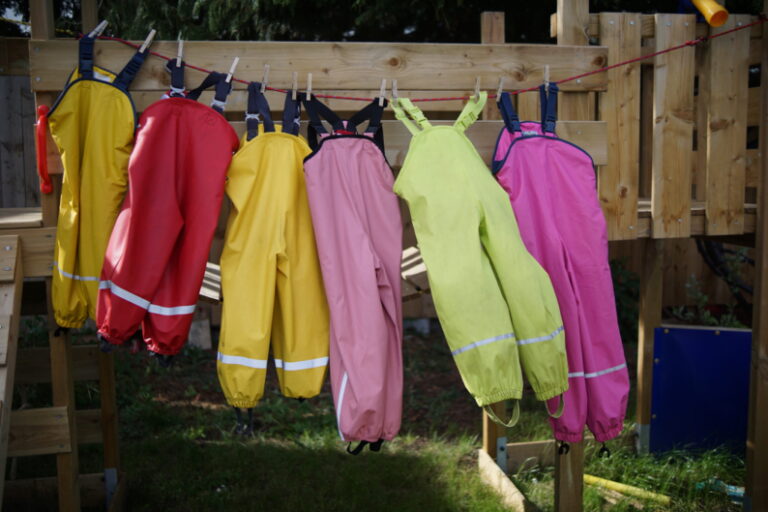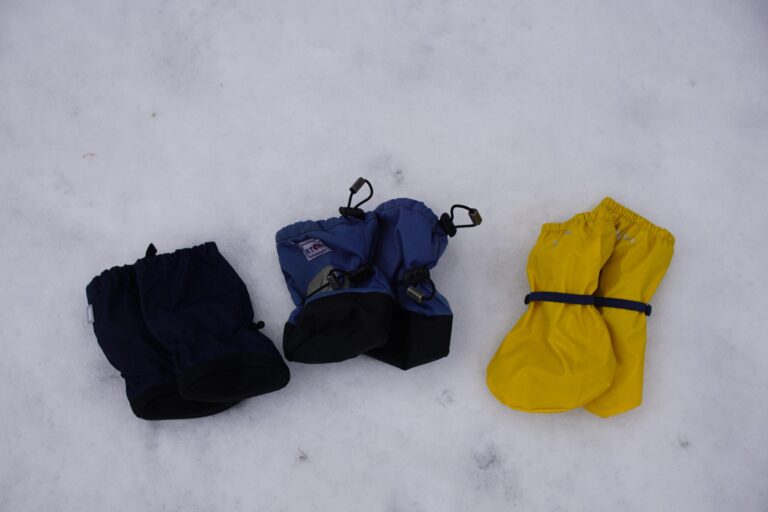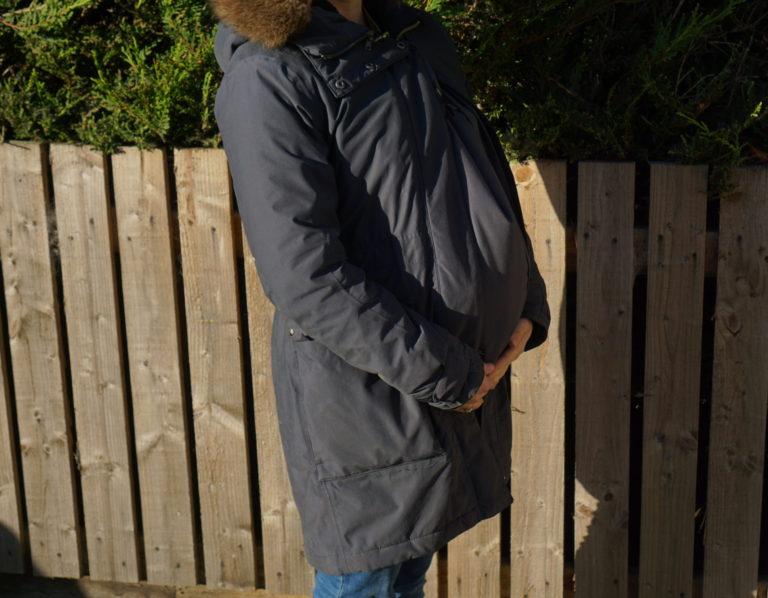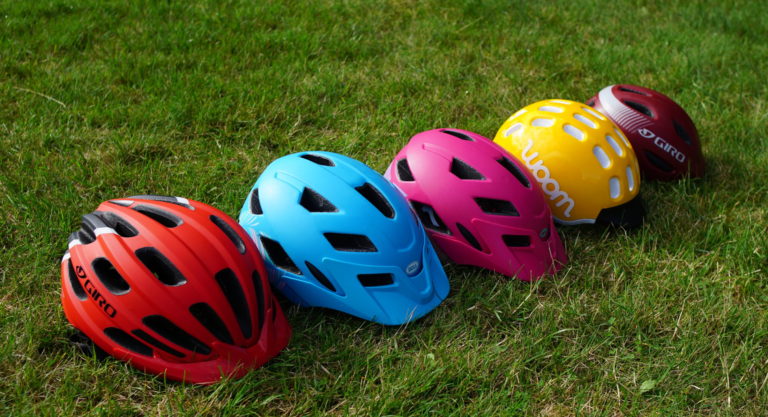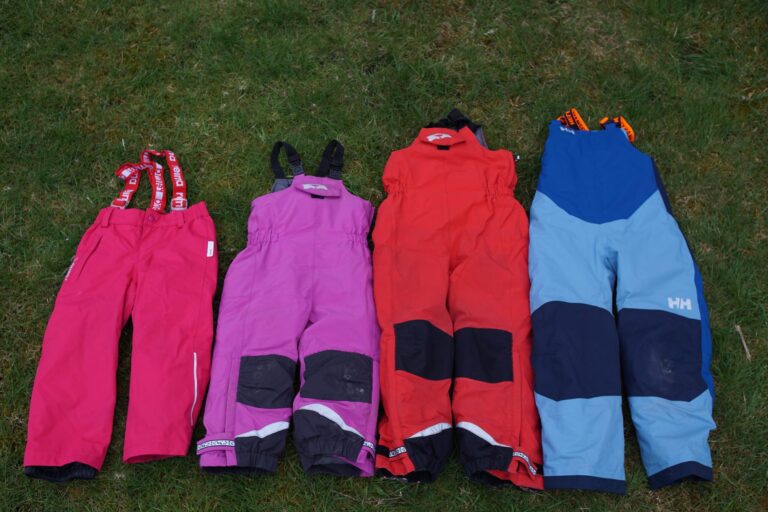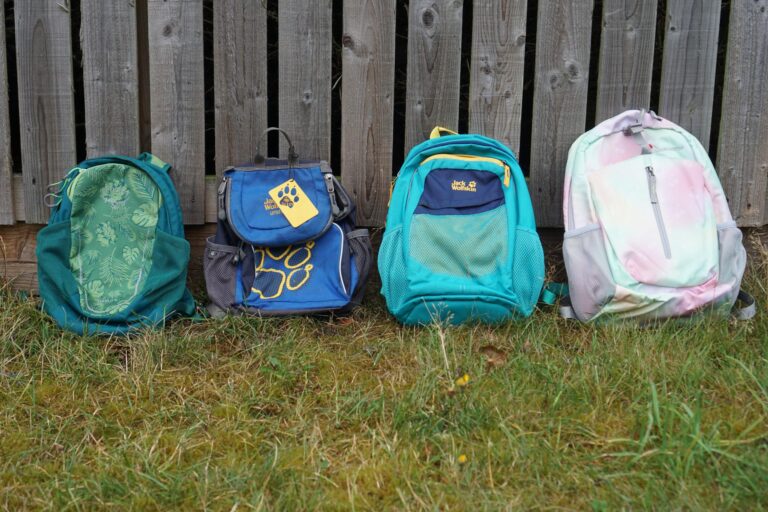Best Kids’ Waterproof Gloves and Mittens (review including experiments!)
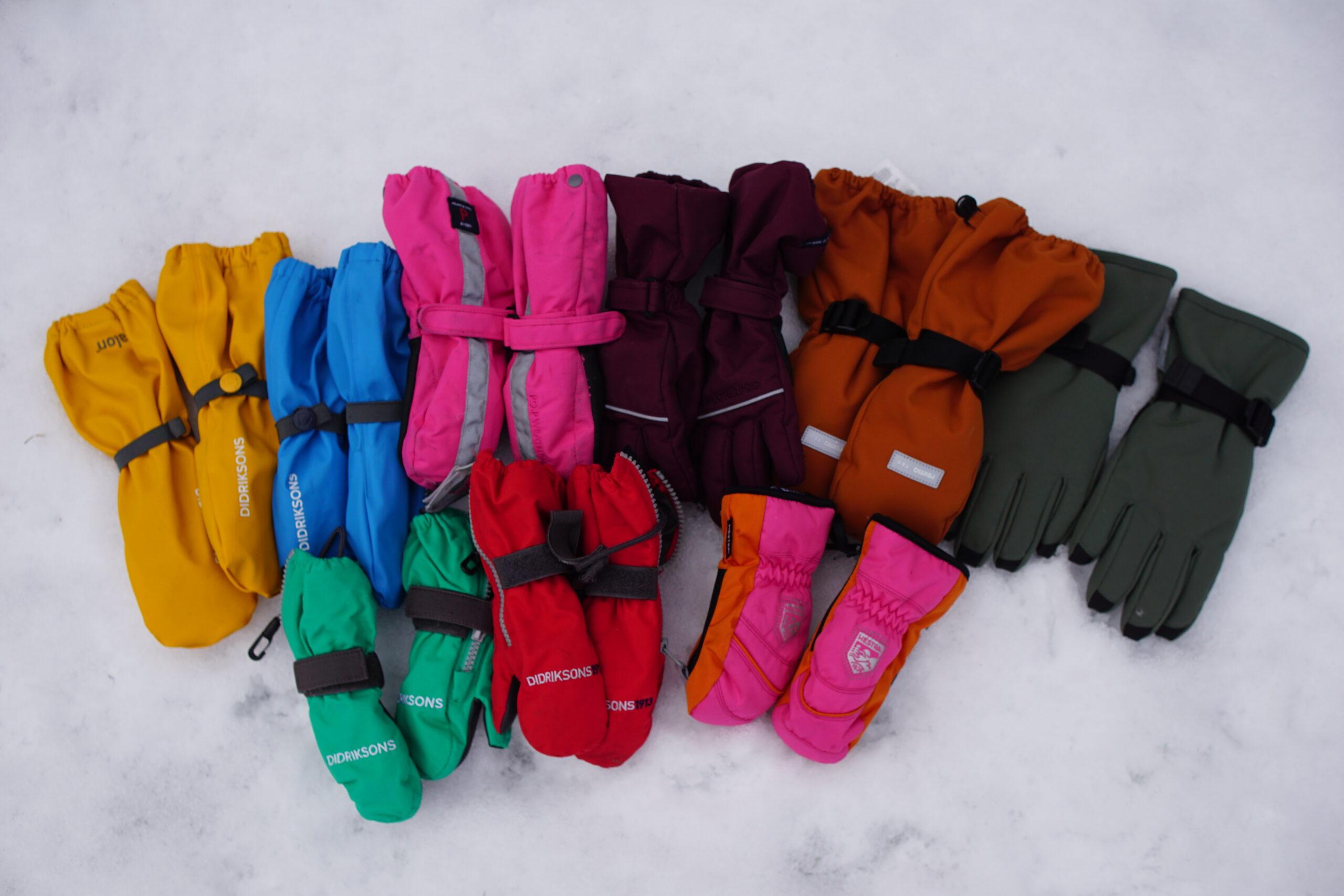

Finding good children’s winter gloves is surprisingly hard. They need to be warm and dry, they need to stay on for as long as possible, they need to be easy to put on again when they inevitably fall off or are pulled off. And ideally, they would let kids retain some use of their hands so that they don’t get completely frustrated and refuse to wear gloves at all!
Over the years I’ve bought and tested a lot of children’s gloves in varied conditions (dry, rainy, snowy, muddy, submerged in an icy water play table…). I also conducted some experiments as part of this review. I hope it will help you to choose the right type of glove for your child.
- Summary: Best Kids’ Gloves and Mitts
- Review: Glove by Glove
- Reima Ote and Tartu
- Polarn O. Pyret Padded Gloves and Mittens
- Didriksons Pileglove Mitts
- Didriksons Biggles Zip Mitts
- Hestra Baby Zip Mitts
- The Most Waterproof Gloves
- The Warmest Gloves
- Glove Features: Wrist straps, cuffs and clips
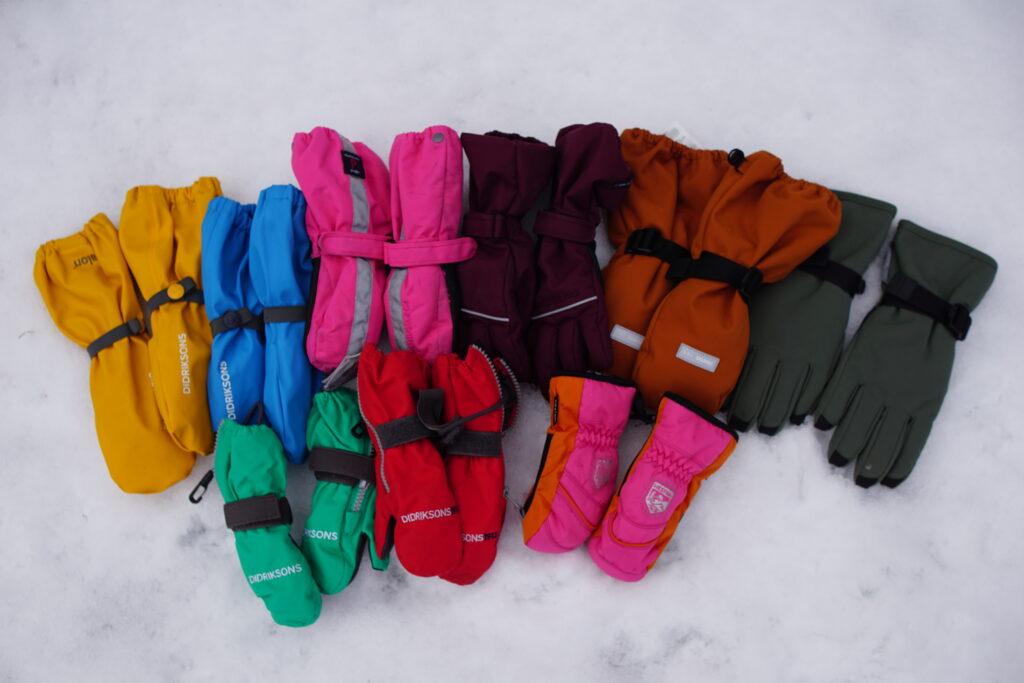

Summary: Best Kids’ Gloves and Mitts
- For overall warmth, insulated snow gloves are the best choice. I’ve found that gloves and mittens with Primaloft insulation seem particularly toasty warm. A good snow glove or mitt with a waterproof liner may absorb quite a lot of water but will stay fairly dry on the inside.
- All other things being equal, mittens are warmer than gloves. The surface area is smaller and little fingers are able to share heat with each other. They are also miles easier to put on. However, the downside is reduced dexterity.
- I much prefer ‘over the coat’ styles of gloves with a long wide gauntlet cuff, elasticated at the end. In my experience, with a good design, these stay on for a long time, and are far easier to put back on than ‘under the coat’ styles.
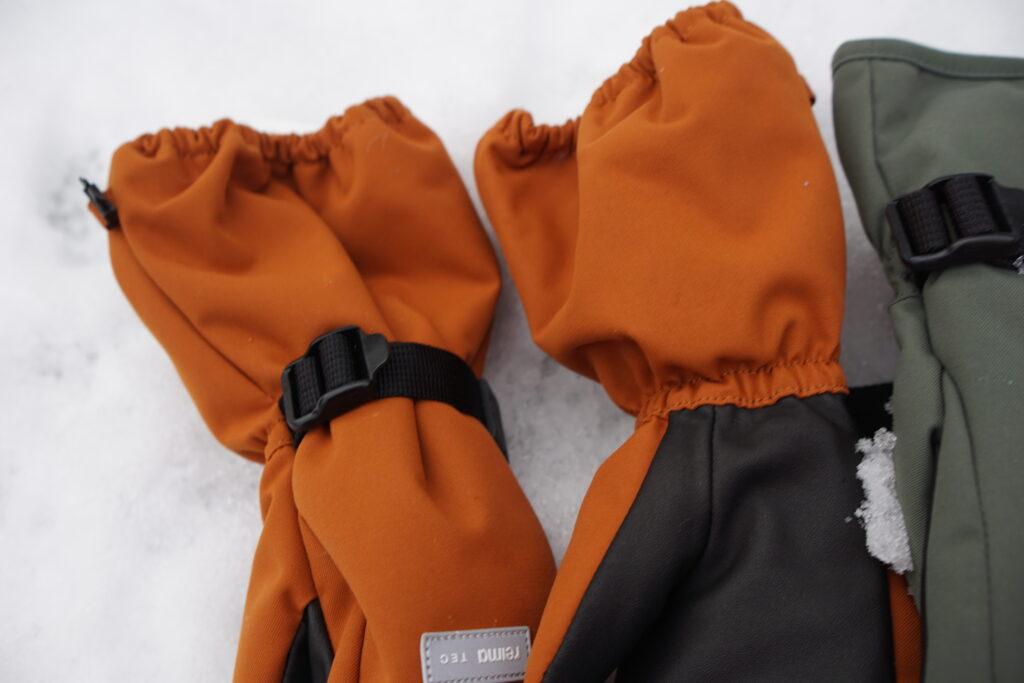

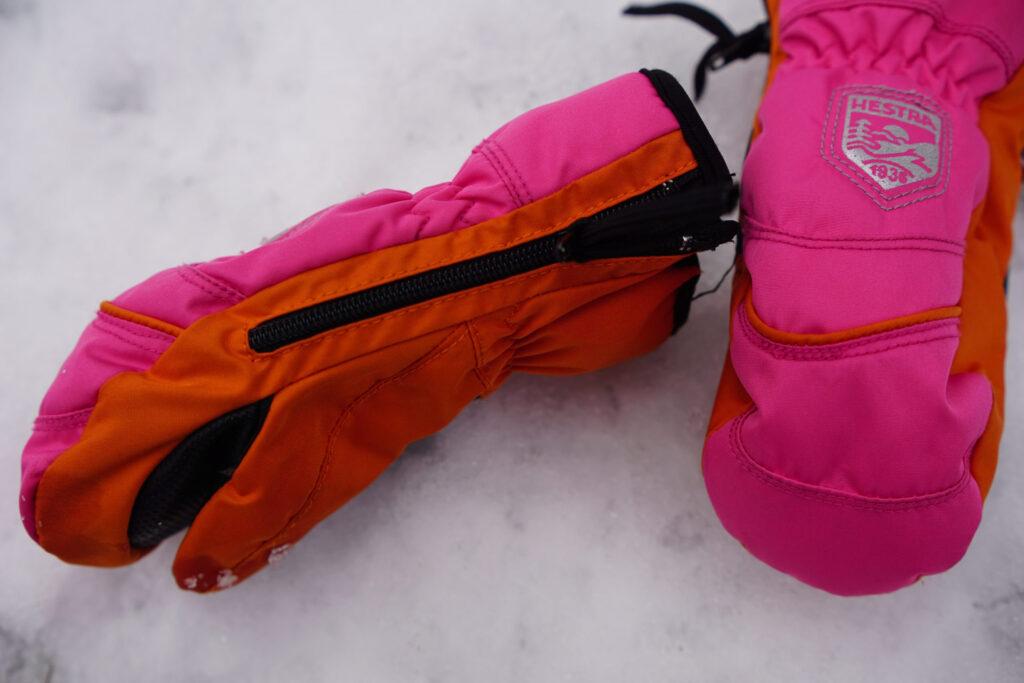

- Gloves and mitts with a long side zip are not suitable for use in wet conditions, as water gets in through the zip. They can be a little easier to put on at first because you can open them up and see where the thumb goes. However, they are often ‘under the coat’ styles, which are frustrating to put back on if they come off once the coat is on. It’s hard to slot the glove back into your little person’s coat sleeve, and if you don’t you get a cold wrist gap.
- For situations where dexterity is important, a thin wool underglove couple with a fleece-lined waterproof mitt can be a good choice. The child can take the overmitt off when they need fine motor control, and put it back on easily themselves. This setup will not be as warm as a ski glove, but it is much warmer than nothing, which is the alternative if your child takes their gloves off all the time to use their hands! It can be a good choice for outdoor nurseries or playgroups. I would recommend sending in quite a few pairs of (named) thin gloves so that these can be swapped out as they get wet and muddy.


Review – Glove by Glove
| TOP PICK: Reima Ote Mittens and Reima Tartu Gloves Positives: Warmest option we have, with loads of Primaloft insulation. Fantastic wrist cinch design, quick and easy to use. Long cuff keeps wet and cold out. Clip together when not in use. Downsides: Quite expensive. Limited availability in the UK. View at Reima |   |
| TOP PICK: PO.P Long Padded Winter Mittens and Gloves Positives: Very warm gloves, with Primaloft insulation (though lighter weight than the Reima options). Long cuff keeps wet and cold out. Downsides: Quite expensive (look out for PO.P sales!) Limited colours. View at Polarn O. Pyret | 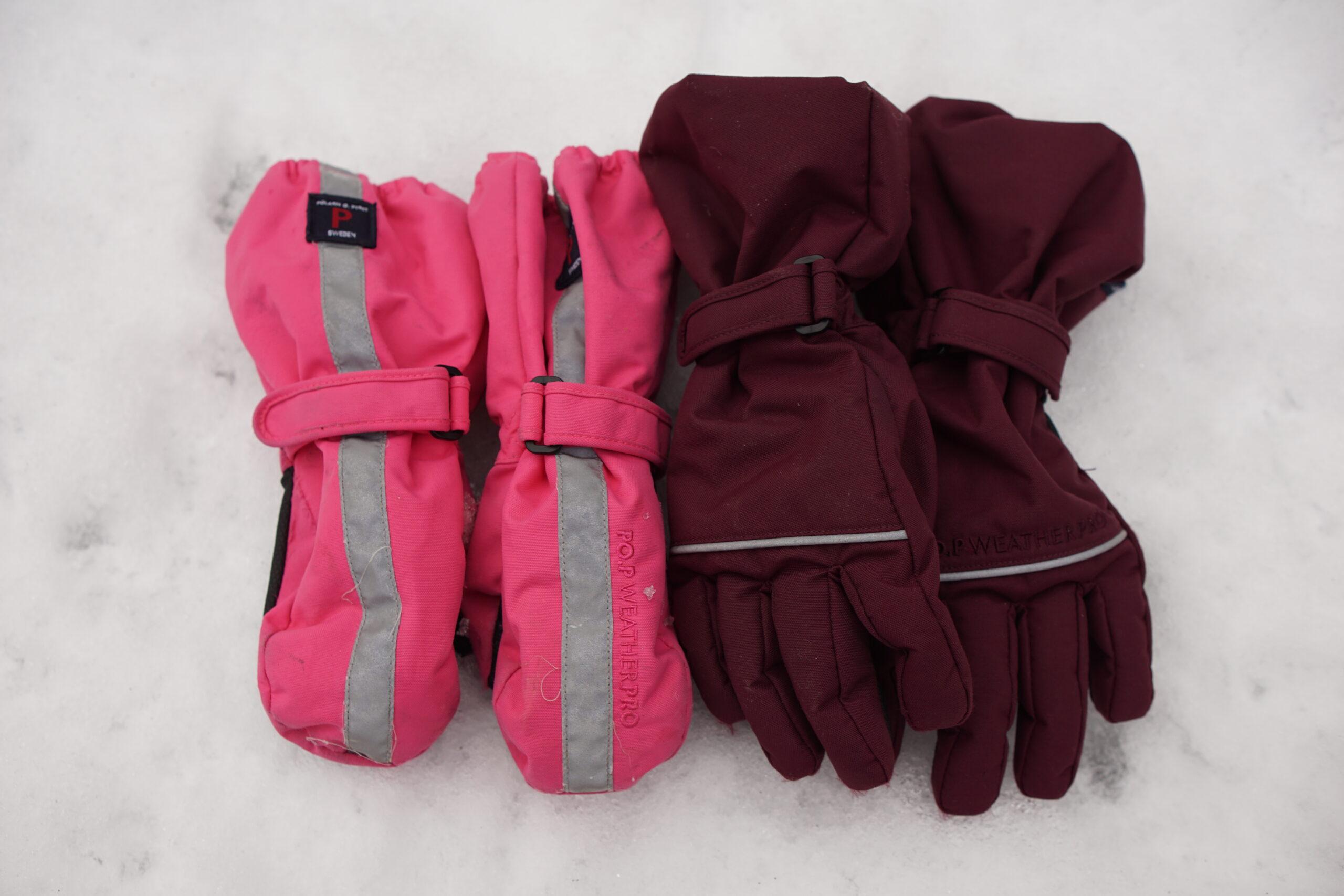  |
| TOP PICK FOR DEXTERITY: Didriksons Pileglove Mitten Whilst not a substitute for an insulated glove, these fleece-lined mitts can be a great choice for outdoor nursery, or other circumstances where children want good use of their hands. Combined with a thin knit glove underneath, children can generally slip the over mitt on and off themselves when they need to use their fingers, and the thinner fabric means they can do more things with the mitt on. Positives: Better use of hands. Children can generally manage these by themselves. Quick drying if you pull the fleece liner out. Wipe clean outer – great for mud. Bright colours – harder to lose. Downsides: Not very warm, only a thin fleece lining. Not actually entirely waterproof, will leak slowly when submerged. View at Didriksons | 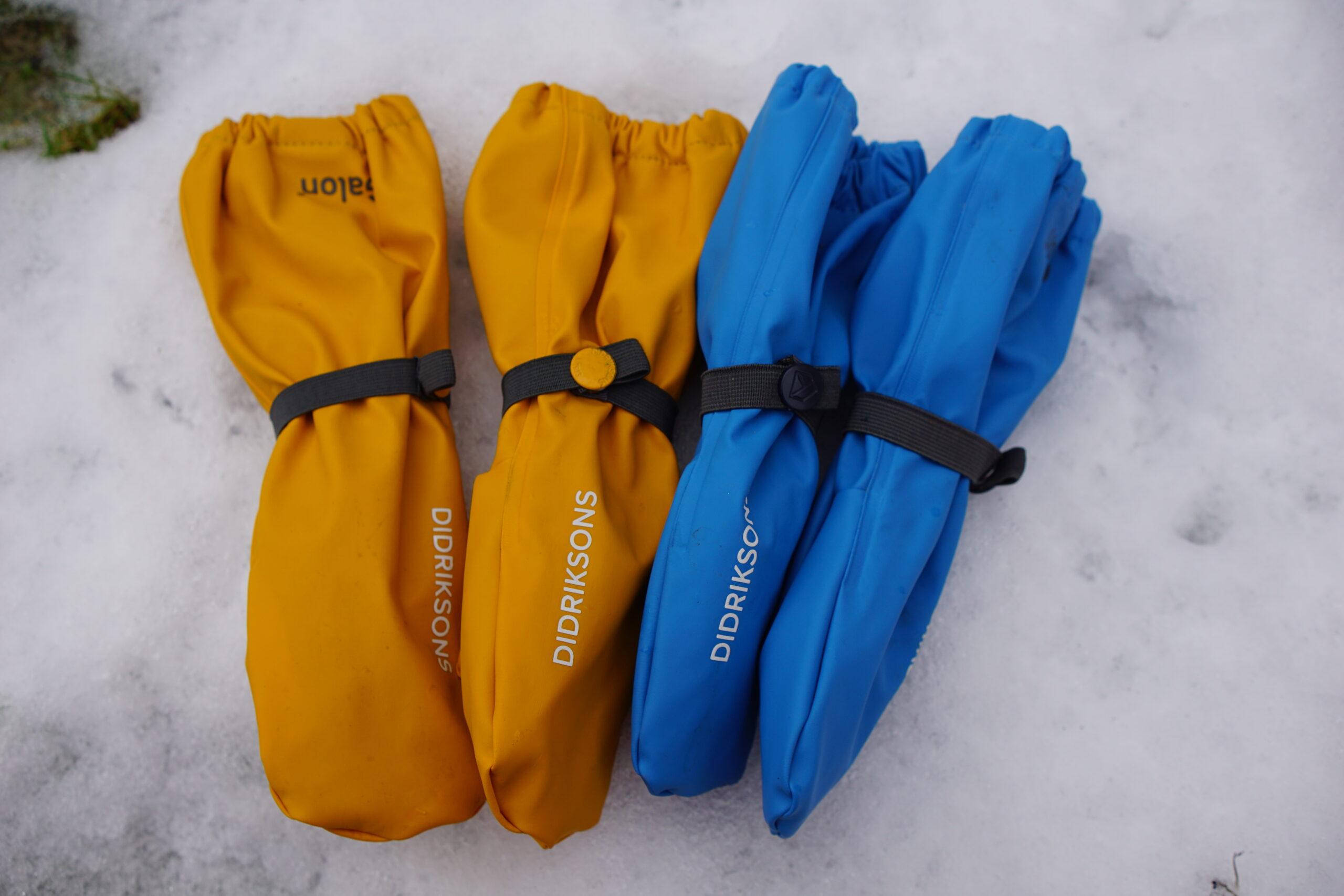  |
| Didriksons Biggles Zip Mitts These are often recommended for outdoor nurseries, but I’m not a big fan myself. The zip design does make it easier to get tiny thumbs into the right slot, so this could be a good choice for 1-2 year olds. However, the zip lets in water if the glove is submerged (yes, my children put their hands in icy water). I think the Biggles mitts also come in a zip-less design, so that might help. I also dislike the wrist- cinch system. You have to wrap a velcro strap right around the glove each time, which is annoying and time consuming. The velcro also sticks to other things, and particularly the string for attaching the gloves together, resulting in a tangled mess. Positives Cosy fleece lining. Zip design makes it easy to get tiny thumbs in the right place. Good range of bright colours. Downsides Not waterproof (probably due to zip). Annoying wrap around velcro system for wrist cinching. Cuff doesn’t fit over coat sleeves. View at Didriksons |   |
| Hestra Baby Zip Mitts These were a gamble in the sales a few years ago, because I was curious to try Hestra gloves on the cheap! I don’t think they are one of Hestra’s better models, and indeed it looks as if they have since changed the design quite a bit. They tend to get used for babies sitting still in the pram, because they aren’t very functional. Positives Very warm with Primaloft insulation. Soft inner. Zip makes it easier to get little thumbs in the right place. Downsides Not waterproof (probably due to zip). Quite long but not wide enough to go over coat sleeve, leading to bunching and gaping at wrist. View at Hestra | 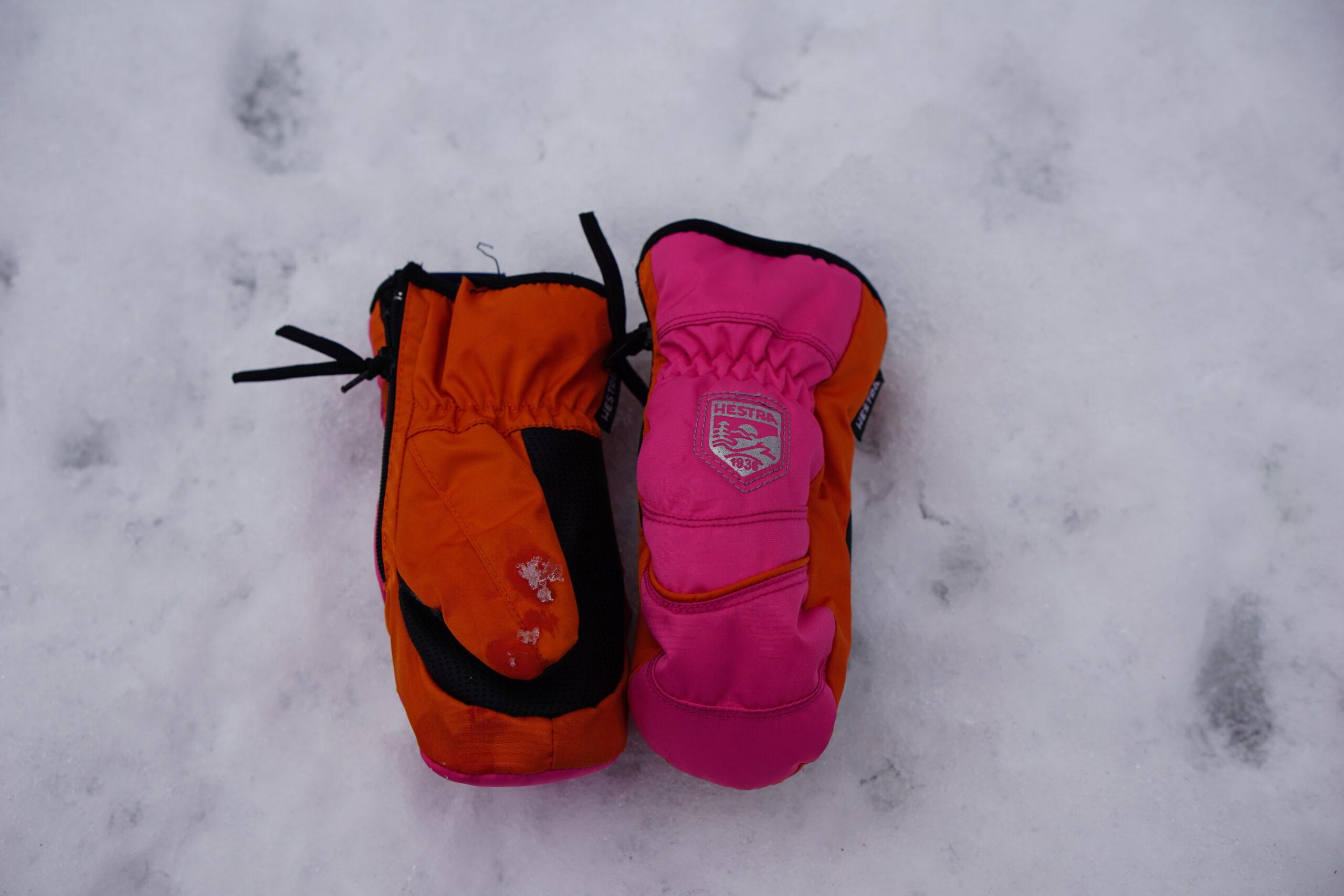  |
The Most Waterproof Gloves
All experiments conducted for this article were of the ‘garden’ variety, and the results should not be taken too seriously!
To test which gloves were the most waterproof, we suspended them in a tub of icy water in the garden for ten minutes, and then felt the inside of the gloves and turned them inside out to check for leaks. We put weights in the gloves to keep them under the water.
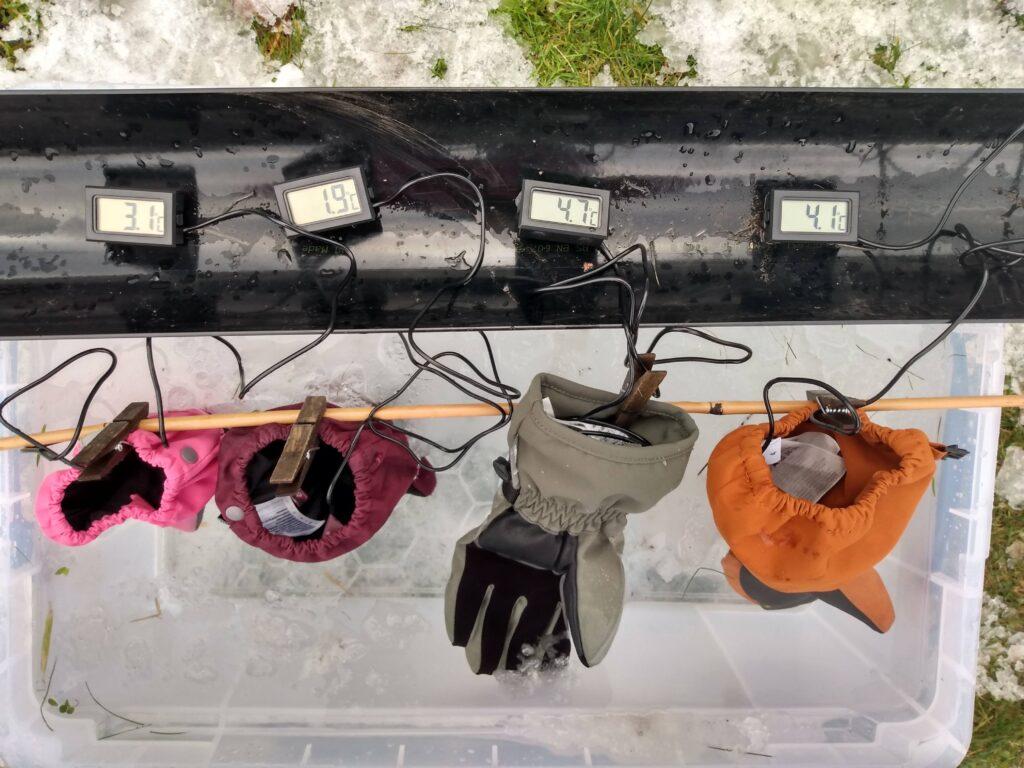

- The ski gloves and mitts (Reima Ote, Reima Tartu, PO.P Kids Padded Winter Mittens, PO.P Long Padded Winter Gloves) performed pretty well in this test. They absorbed a lot of water (between 100% and 200% of their weight) but very little got through the waterproof liner. Having tested both gloves in each pair, there was some dampness and leaking at the tips of all the gloves, ranging from minimal to moderate, but no obvious winners or losers.
- The waterproof overmitts (Didriksons Pileglove Mittens) had moderate water seepage at the tips. This is consistent with what I see when my children use them for playing in the water table for extended periods.
- The zipped gloves (Didriksons Biggles , Hestra Baby Zip Mittens) were completely soaked through, I could pour water out of them afterwards. For very wet conditions, no matter how good the fabric, the zip will let water in.
From this experiment, I conclude that none of the gloves are really completely waterproof, but Reima and Polarn O. Pyret ski gloves will do a decent job of keeping a child’s hands dry. The Didriksons Pileglove Mitts were less waterproof than I was hoping but still okay. Gloves with zips are always going to leak in very wet conditions.
The Warmest Gloves


I attempted several different temperature tests on our kids’ gloves. I was inspired by a Swedish ‘Bast i Test’ article which I would highly recommend. You can read it here (it requires translation). The testers placed the test gloves in a cold chamber and tested how long it took for the internal temperature to drop by 5C. Fantastic, I thought! Now I will truly know which are the warmest gloves.
To produce something similar, I tried carrying our gloves outside and suspending them over a tub of icy water. Firstly, it was very hard to get them all to start at the same temperature. Secondly, their internal temperatures plummeted like a stone! They lost an average of 14C in just four minutes. And there was little to distinguish between the gloves in the first batch.
After a family discussion, we decided to try testing the gloves with warm hands inside them, which seemed much more realistic. We arranged for some small testers to wear the gloves in their pushchair on a cold walk, with the temperature probes tucked down inside the gloves. We encountered two problems. Firstly, if the probe shifted away from the tester’s hand, the temperature immediately dropped right off. This cast down over the reliability of the results. Secondly, apart from this issue the babies’ hands all stayed toasty warm, so there was no material change in temperature to report. The gloves worked!
Unfortunately I therefore have no good quality data for you on glove warmth. I can give you my personal experience, which is:
- Mittens are warmer than gloves because the fingers can share body heat and the surface area is smaller.
- My perception is that the Reima and PO.P gloves are significantly warmer than a thin glove with a Didriksons’ Pileglove overmitt. This is based on feeling children’s hands when they come in from walking or playing in the cold.
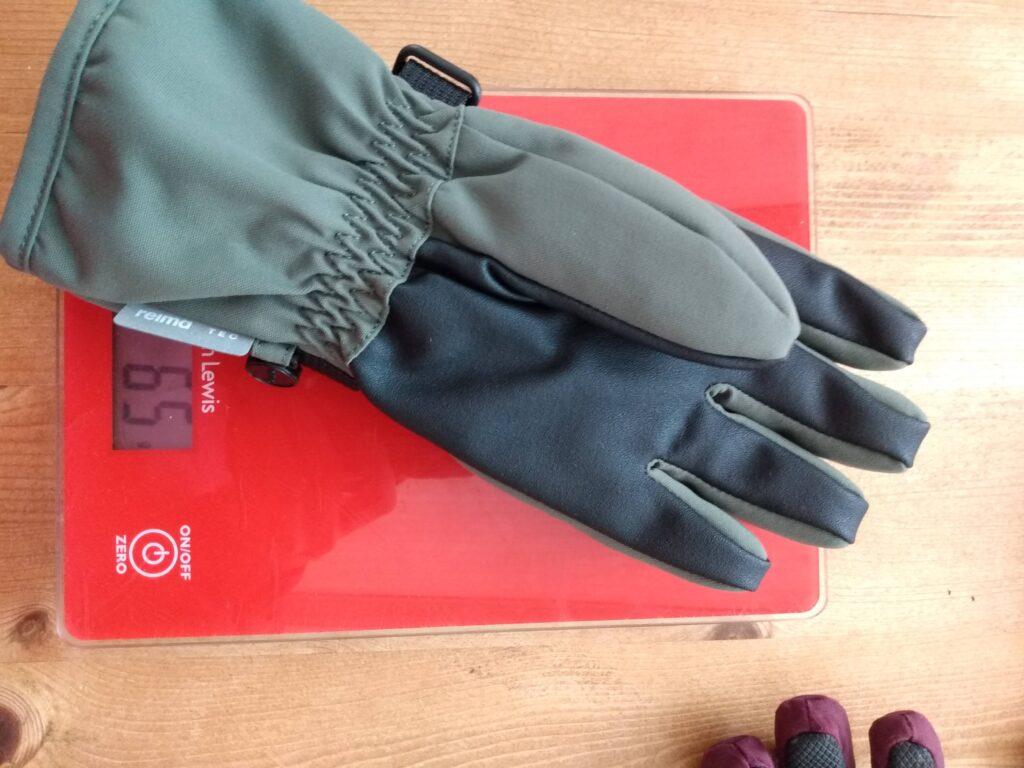

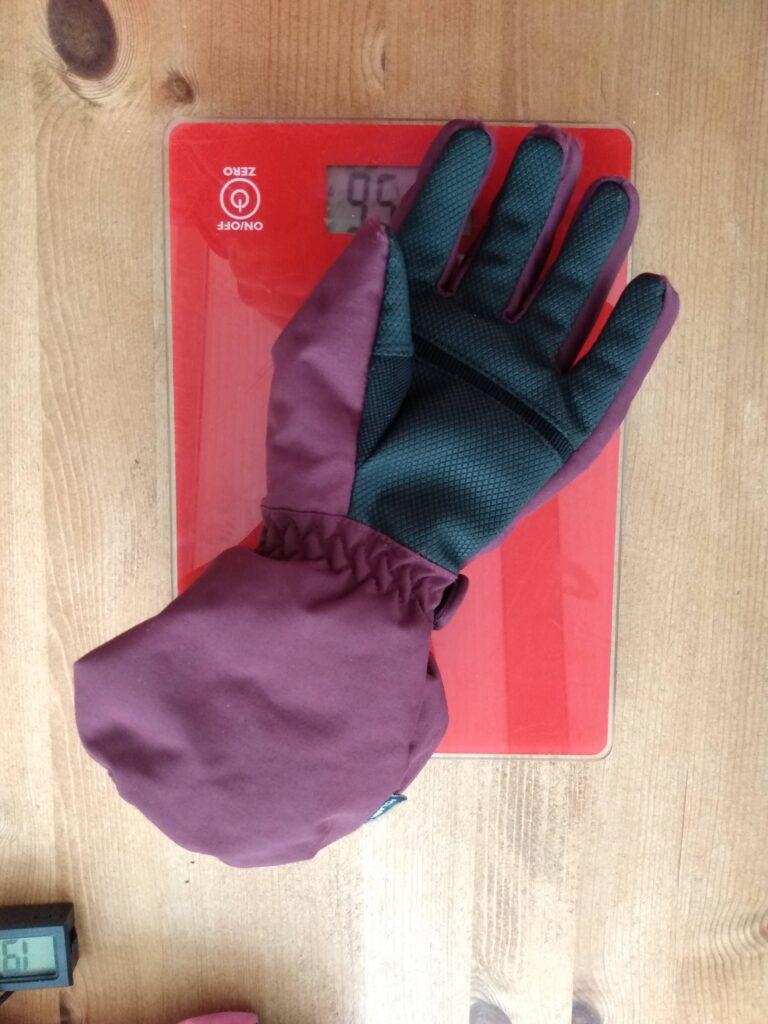

One interesting thing I noticed was that the Reima gloves and mitts are heavier than the Polarn gloves in the same size/style.
- A size 5 Reima Tartu was 65g vs 56g for PO.P Long Padded Winter Gloves
- A size 4 Reima Ote was a whopping 70g vs 51g for PO.P Padded Winter Mittens
As all these gloves use the same Primaloft insulation, I would guess that the Reima gloves have quite a bit more insulation in them, and are therefore probably quite a bit warmer. The Reima Ote mittens in particular feel really padded around the hand.
Glove Features: Wrist straps, cuffs and clips


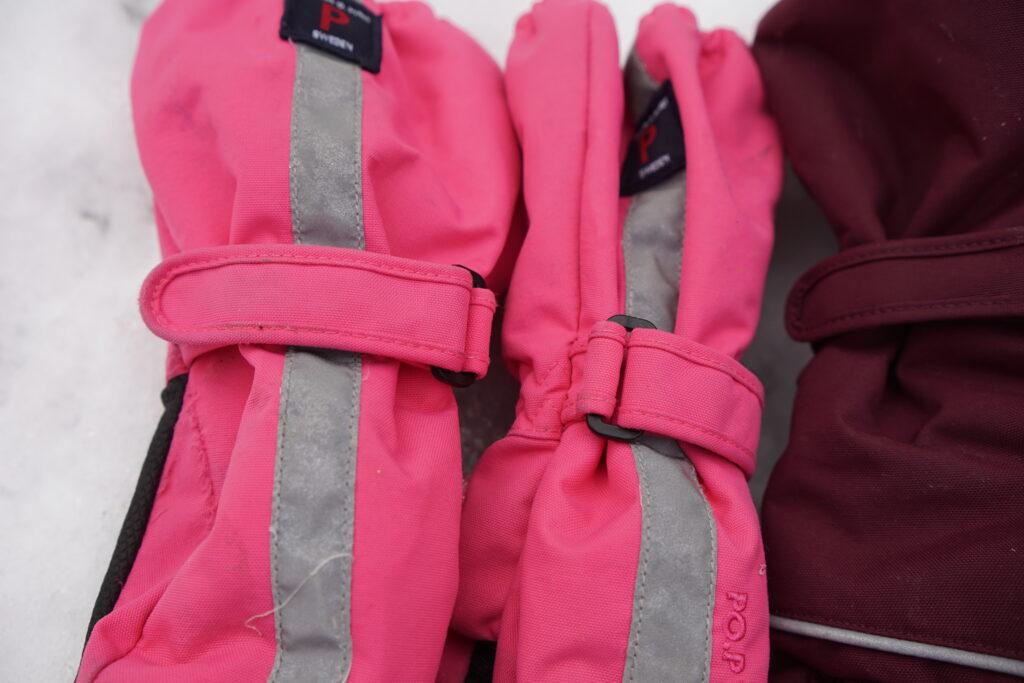

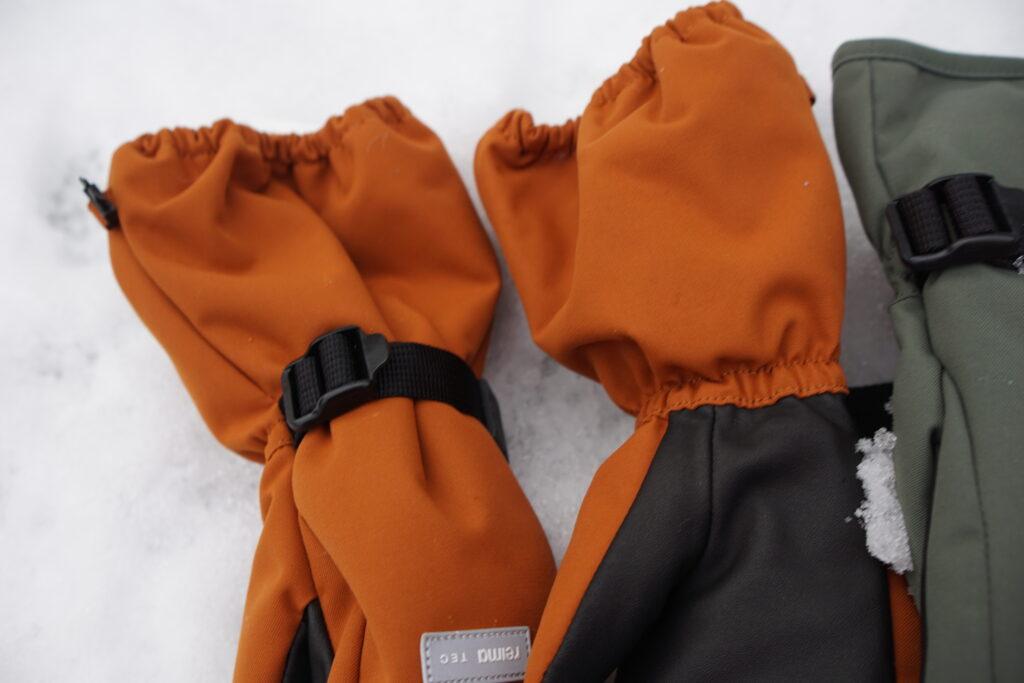

Most long gloves will have some sort of system for tightening the glove at the wrist to keep the heat in and the wet and snow out. My favourite system is Reima’s top buckle which is quick and easy to use, and very tidy. I also quite like the PO.P system of a top velcro strap. I dislike the Didriksons system of a wrap around strap, either elastic or velcro, as it’s just much more annoying for me to refit every time. The Biggles strap is particularly good at attaching itself to things it shouldn’t.
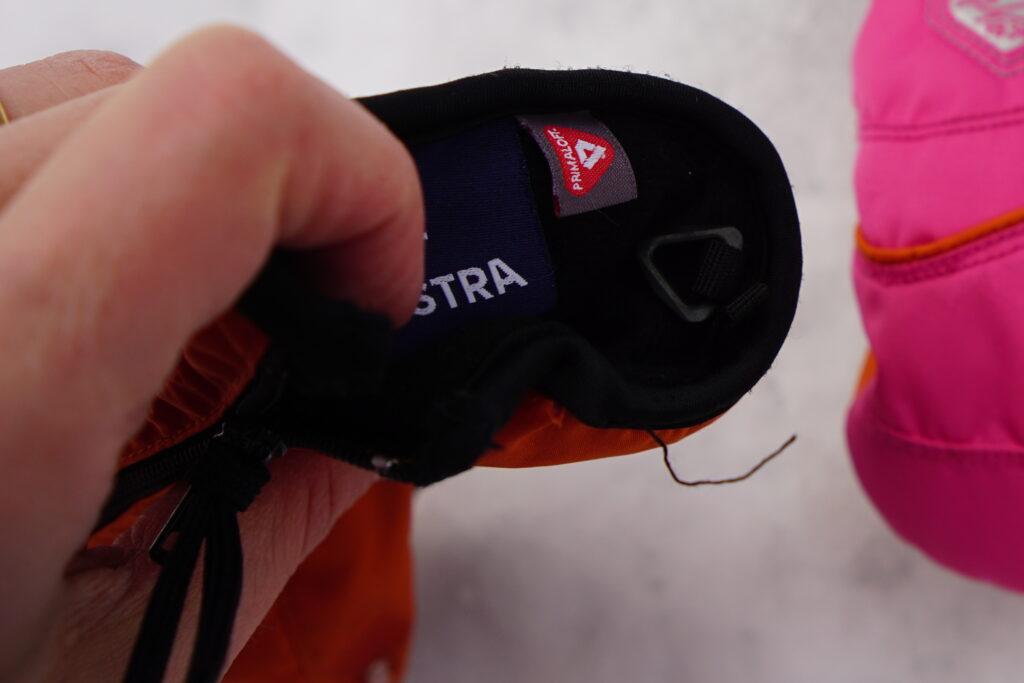





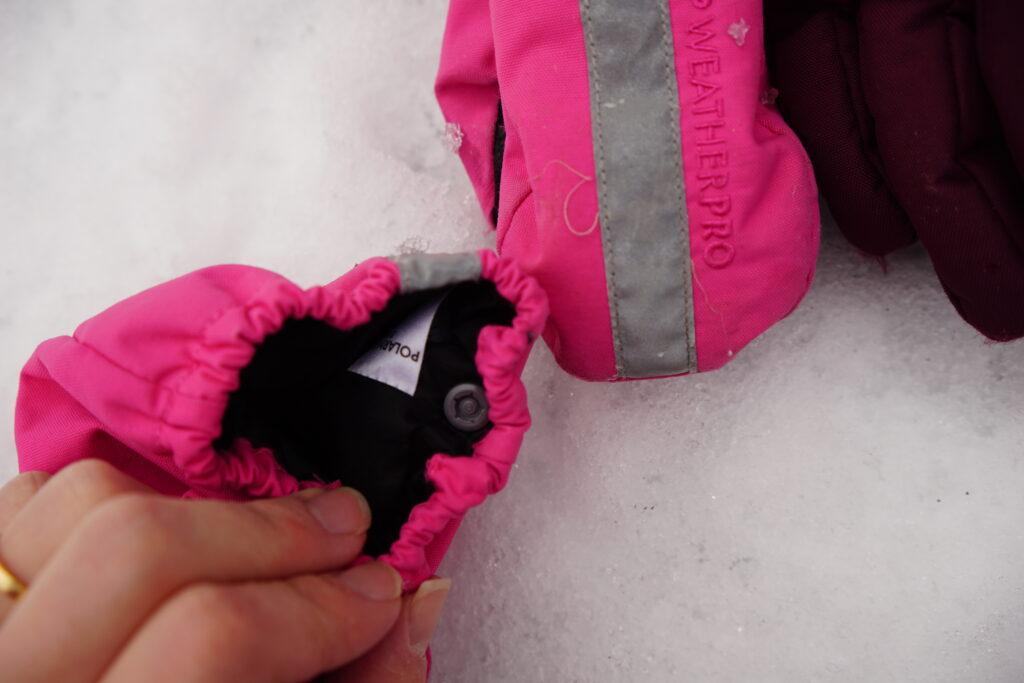

Most of the gloves come with some way of attaching the glove to a coat or a pair together when not in use. I don’t use this feature too much, but it comes in handy in a nursery bag. Reima’s simple buckle clip is definitely the best. The Biggles Mitts have clips which I think are to attach them to a coat. They are long and get tangled. The PO.P gloves have an inexplicable popper (both gloves female in all our pairs) which is perhaps to attach them to a jacket, but I can’t see a popper in any of our PO. P jackets. It’s not mentioned on the website description!
I definitely prefer gloves with a wide long cuff designed to go over the coat sleeve. With the best will in the world, that glove is going to come off at some point, and it is ever so much easier to put them back on well over-the-coat than under-the-coat.
So there you have it – my thoughts on all the kids’ winter gloves and mitts we currently own. I’d love to hear your suggestions. If there are any other brands/styles which you think are particularly good, please leave a comment below.

